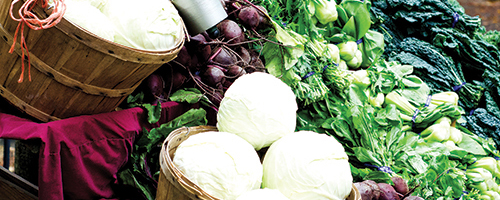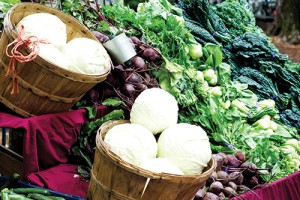Picture an 85-acre organic farm somewhere in Southern California, nestled between hundreds of acres of corporate oranges and avocados.
The trials of an organic farmer
Picture an 85-acre organic farm somewhere in Southern California, nestled between hundreds of acres of corporate oranges and avocados.
Rather than the assembly- line farming of a single crop, these farmers grow small patches of fruit, vegetables and herbs by the season, shipping them out to subscribers who, each week, receive an assortment of farm-fresh produce delivered to their doorsteps.
This farm and many like it can be found all across the country—like islands in a sea of gigantic corporate farms. They are small and defenseless, and they supply much of the organic produce that can be found in farmers markets and grocery stores all over America.
By farm standards, 85 acres is very small. Some of the biggest farms in California operate over tens of thousands of acres, relying on technology, machinery and pesticides as the means of reaping large harvests. The biggest ones ship their food in trucks all over America and in boats to other parts of the world.
It may seem unfair that the two should be made to compete, and it’s why many organic farms like the one I mentioned are forced to struggle for their very existence.
I briefly worked at this particular little Southern California farm, and I spent my days in the field
picking weeds with Mexican laborers, watering greenhouses and listening to avocado pickers on the hillside singing mariachi songs. Throughout the day we could see helicopters dusting the avocado trees around us with pesticide.
The gigantic Sunkist orange groves across the way were heated in winter by towering machines like windmills, big white fans that would keep the trees warm enough to grow in winter. Without these, oranges wouldn’t grow on the valley floor because of frost.
Small organic farms like the one I worked on supply much of our organic produce, and many of them have little means of sustaining themselves beyond the local market.
They don’t have the capital to build giant heating systems or pay for helicopters. They can’t ship their vegetables to New York, and they don’t have partnerships with China or Ecuador.
Small organic farmers must pay somebody to pick weeds all day by hand, and they rely entirely on the surrounding urban areas for their survival.
Giant heaters and crop-dusting helicopters help cheapen the cost of labor, which is why nonorganic produce is so much cheaper in the store.
Bolthouse Farms, which operates on 60,000 acres in California’s Central Valley, employs a tractor that can pick hundreds of carrots at a time. Large-scale farmers like Bolthouse are increasingly going organic, but the scale of their operations will still keep them out of the little-farms league.
In the end, size and scale don’t guarantee better-tasting food. Most large farms pick their produce early to account for travel time and shelf life.The more local the farm, the fresher the produce.
Small organic farms can sell to local restaurants or farmers markets, or ship their produce off to members of community supported agriculture programs, where subscribers receive weekly or monthly boxes of vegetables and fruit. Apart from this, many operate largely hand to mouth, taking in little more than they expend in cost of labor.
Some of these small farms, including the one I worked on, eventually die out, facing bankruptcy and stiff competition from their corporate peers. They must sell their produce at higher prices simply because they barely manage to scrape by while paying their workers living wages.
Farmers markets, food cooperatives and grocery stores like Whole Foods are the only places where small farmers can sell their food in the city. Every time you go to a farmers market, you’re supporting local growers and helping keep them afloat despite their corporate competition—and you’re getting better food to boot.
So buy local and save a farm.







